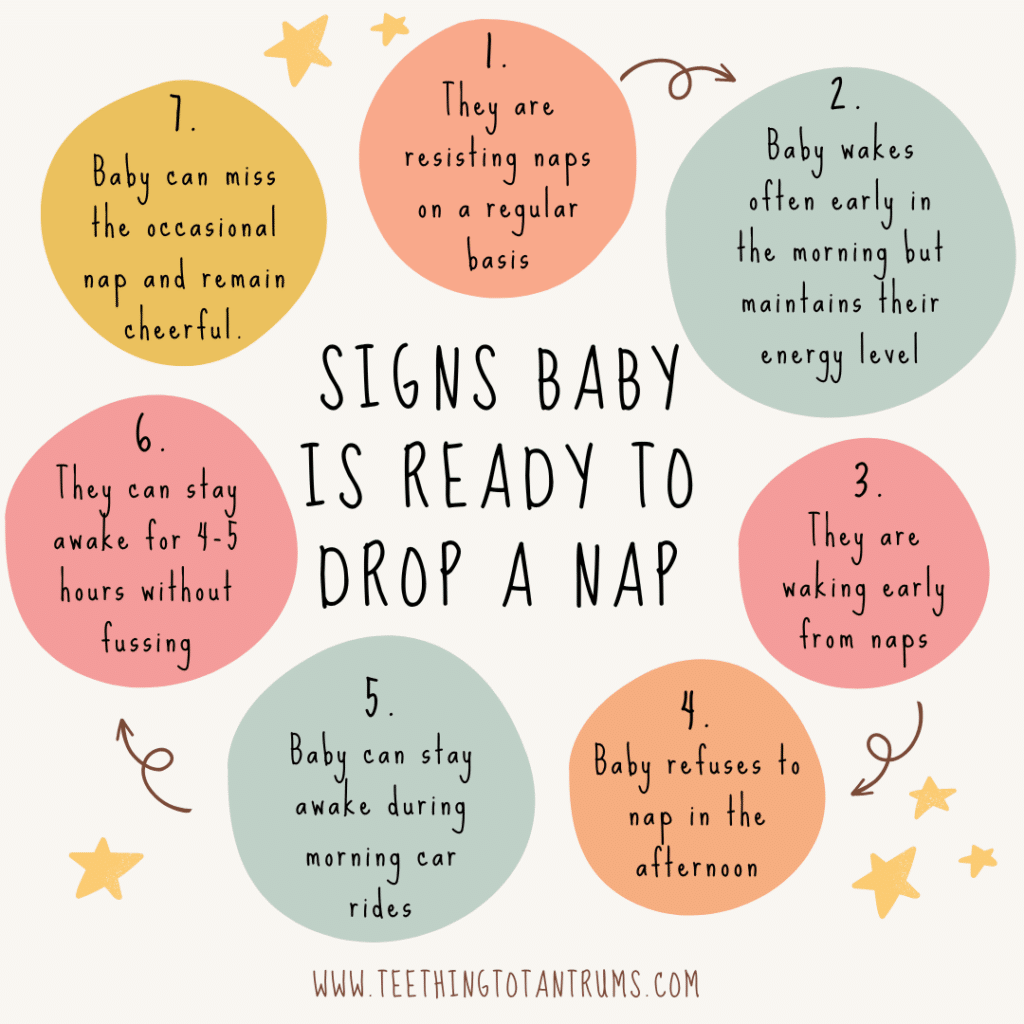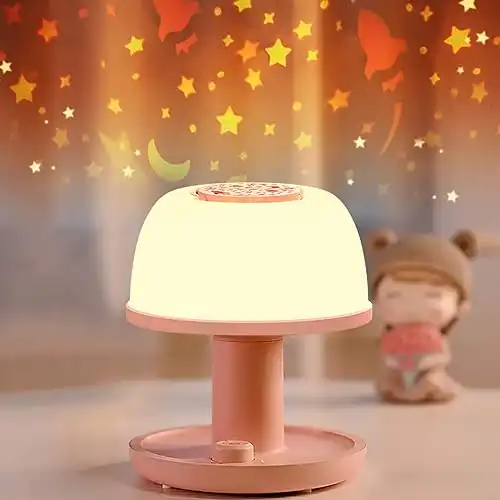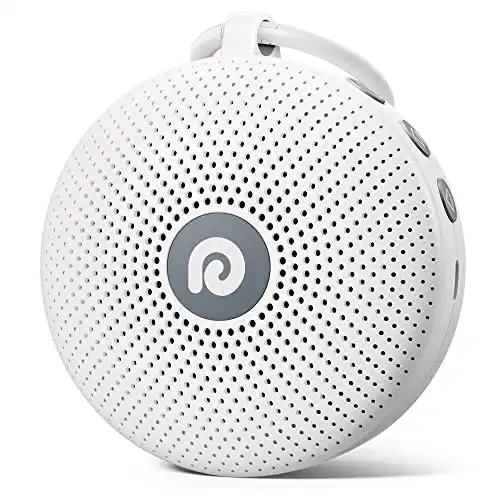As your baby grows and develops, their sleep needs change, and it’s important to adjust their nap schedule accordingly. The 2 to 1 nap transition is a part of this change and it can be a challenging time for both you and your little one.
So how do we navigate this transition so the disruption to baby’s sleep schedules is as limited as possible whilst ensuring both you and baby are happy, well-rested and content?
What Is The 2 To 1 Nap Transition?
The 2 to 1 nap transition is a developmental milestone in a baby’s sleep pattern where your baby moves from two naps to one nap a day. The remaining nap will be longer than before and during this time, baby’s bedtime may need to be adjusted too to ensure they’re getting enough sleep.
At What Age Do Babies Transition From 2 Naps To 1?
Most babies transition from 2 naps to 1 between 12-18 months, but every baby is different. Some may transition earlier or later depending on their brain development, individual sleep needs, and personality.
NOTE: The 2-1 nap transition can also be affected by the 12 month sleep regression or the 18 month sleep regression. So make sure you’re prepared to handle sleep regressions too.
Signs Baby Is Ready To Drop To One Nap
If your baby is between 12 and 18 months old, it may be time to start considering the transition from two naps to one. Here are some common signs that your baby is ready to drop a nap:

- Resisting naps. If your baby is fighting naps or taking a long time to fall asleep, it may be a sign that they are ready to transition to one nap.
- Early morning wake-ups or night wakings. If your baby is consistently waking up earlier in the morning, or waking at night, but maintaining their energy levels without getting grumpy, it may be a sign that they are ready to drop a nap.
- Waking early from naps. If your baby is waking up after only a short nap, it could be a sign that they are ready to transition to one longer nap.
- Refusing the afternoon nap. If your baby is consistently refusing their day sleep in the afternoon, it may be a sign that they are ready to drop a nap.
- Can stay awake during morning car rides. Babies often fall asleep when in the car and young babies are very prone to this. If your baby is able to stay awake during morning car rides especially if it is at their morning nap time then this may be an indication they are ready to drop the morning nap.
- Can stay awake for 4-5 hours without fussing. If you find your baby is able to stay awake for 4-5 hours without getting fussy this may be another indication they are ready to transition from 2 – 1 nap.
- Can miss the occasional nap and remain cheerful. If for whatever reason they miss a nap and manage to remain cheerful this is a good sign they do not need as much daytime sleep as they did.
REMEMBER: Every baby is different, and there is no one-size-fits-all approach to the 2 to 1 nap transition. Some babies may be ready to drop a nap as early as 12 months, while others may not be ready until 18 months or older. You should base your decision on your baby’s individual needs and sleep cycles.
Transitioning To A One-Nap Schedule – Which Nap Gets Dropped?
When transitioning to a one-nap schedule, you may be wondering which nap gets dropped.
Generally, it is the morning nap that gets dropped. This is because the afternoon nap is usually longer and more restorative. However, every baby is different, and you should base your decision on your baby’s individual needs.
One way to determine which nap to drop is to pay attention to your baby’s sleep patterns:
- If your baby consistently takes a long afternoon nap and a short morning nap, it may be time to drop the morning nap.
- On the other hand, if your baby takes a long morning nap and a short afternoon nap, you may want to drop the afternoon nap.
- You may find that your baby still needs 2 naps on some days and 1 on others during the transition phase. This will depend a lot on what they are doing during the course of the day. Be prepared to adjust on these days and respond to your little one’s sleep cues.
Looking to get your little one to sleep quickly and effortlessly? Check out my Bedtime and Nap Cheat Sheet and master the art of making daytime naps and bedtimes as seamless as possible.
A bedtime & nap cheat sheet so good your little one will ask you to put them to bed...
Laura Williams "This is a life saver! I'm so glad I downloaded your bedtime & nap cheat sheet. My little one actually asked me to put him to bed last night! Unbelievable! Thank you so much!"
Click Here For The FREE Cheat Sheet
Adjusting The Nap And Sleep Schedule
Adjusting your little one’s nap schedule can be a daunting task, but it’s an important step in the 2 to 1 nap transition. Here are some things to keep in mind as you make the switch.
1. Impact On Bedtime
When transitioning from two naps to one, you’ll likely need to adjust your baby’s bedtime to accommodate the change. Your baby may need an earlier bedtime and a slightly longer daytime nap to make up for the lost nap.
NOTE: Bedtime routines have shown important associations with areas associated with child wellbeing and development. Their importance in heathy development should not be underestimated.
2. Dealing with Short Naps and Overtiredness
During the transition, you may notice that your baby’s naps are shorter or that they become overtired more easily. This is normal and may take a few weeks to resolve.
Try to stick to a consistent nap schedule and offer plenty of opportunities for quiet time throughout the day to prevent your little one from becoming overtired.
A short cat nap of no more than 30-45 minutes can also help to bridge the ‘nap-gap’.
3. Managing Wake Windows and Awake Time
As your little one navigates the 2 to 1 nap transition, their wake windows and awake time will need to be adjusted too.
Your baby will likely need to be awake for longer periods of time between naps, so it’s important to find a balance of sleep for the entire day that works for them.
Recognising your child’s sleep cues is vital to this step and It is important not to try and keep your baby awake if they need to sleep as this will just lead to overtiredness.
NOTE: Here are the AAP’s recommendations for sleep amounts for babies: Infants of 4 months to 12 months of age should have 12-16 hours of sleep per 24 hour period (including naps) on a regular basis to promote optimal health. Children of 1 to 2 years of age should 11-14 hours of sleep per 24 hour period (including naps) on a regular basis to promote optimal health.
4. The Role of Daycare and Quiet Time
If your baby attends daycare, it’s important to communicate with the daycare workers about the nap transition period and your intended sleep schedule to ensure your little one’s schedule at daycare remains consistent with your plans.
Additionally, incorporating quiet time into your baby’s day can help them recharge and avoid becoming overtired.
5. Creating a Wind-Down Routine
Creating a consistent wind-down routine can help signal to your baby that it’s time for sleep. This can include activities such as reading a book, singing a lullaby, or dimming the lights. Experiment with different routines to find what works best for your baby.
Finding the right night light for your child can be quite a task. You want something safe, comforting, and practical. The Cozy Starry Night Light ticks these boxes, with eye-friendly warm lighting and an easy-to-use dimmer.
Its gentle glow makes it the best night light for feeding baby, diaper changes, or comforting your little one back to sleep.
As your baby grows the Cozy Starry Night Light's starry sky projection can provide comfort and gentle quiet time stimulation. Its soft lighting ensures a dreamy, peaceful environment, supporting your baby’s natural sleep cycle.
It really is a fantastic nightlight (at a very reasonable price!)
- Eye-friendly warm lighting with adjustable brightness.
- Includes a timer function for convenience.
- Projects a starry sky that is soothing for little ones.
- Rechargeable battery, so it's very portable.
- A USB adapter is not included for charging.
- The star projector is static without motion (however, this is ideal for very young babies and toddlers).
- Battery life varies based on the brightness settings.
Transition Strategies: Gradual vs Cold Turkey
When it comes to transitioning from two naps to one nap, there are two main strategies: gradual and cold turkey. Each strategy has its pros and cons, and it’s important to choose the one that works best for you and your child.
Gradual Transition
A gradual transition involves slowly adjusting your child’s nap schedule over a period of time and is the method that I personally use. It means gradually increasing the time between naps until you reach one mid-day nap.
The advantage of a gradual transition is that it allows your little one’s body to adjust to the new schedule gradually, reducing the risk of crankiness and sleep disruptions.
To make a gradual transition, start by pushing back the morning nap by 15-30 minutes each day until it falls around mid-day. Then, gradually increase the length of the mid-day nap until it replaces the morning and afternoon naps.
Make use of a short cat nap of no more than 30 minutes to get your little one through to bedtime without becoming overtired, to bridge the ‘nap-gap’.
Consistency is key during a gradual transition and it is important that you stick to the new schedule as closely as possible to help your child adjust.
Cold Turkey
A cold turkey method involves immediately switching from two naps to one nap and it is not the method that I would choose to deal with 2 to 1 nap transition.
This is because going cold turkey is more challenging for both you and your child, as it requires a sudden adjustment to a new schedule.
However, it can be effective for children who are ready for change and can adapt quickly.
To make a cold turkey transition, simply drop one of the naps and move the remaining nap to mid-day. If you feel this to be the best.
If you choose this option be prepared for some crankiness and sleep disruptions as your child adjusts to the new schedule.
NOTE: Both gradual and cold turkey transitions can be effective strategies for transitioning from two naps to one nap. The key is to choose the strategy that you feel would work best for you and your child and to be consistent in the new schedule.
Frequently Asked Questions About The 2 To 1 Nap Transition
Looking for more information about the 2 to 1 nap transition process? Here are the answers to the most common questions asked by parents just like you.
How Long Does The 2 To 1 Nap Transition Typically Take?
The 2 to 1 nap transition can take anywhere from a few days to a couple of weeks, depending on your baby’s age, temperament, and sleep needs. It’s important to be patient and flexible during this transition and to follow your baby’s cues.
Is 11 Months Too Early For One Nap?
Yes and no… 11 months of age may be too early for the 2 to 1 nap transition for some babies, but every baby is different. Watch for signs that your baby may be ready, such as longer awake times and difficulty falling asleep for naps.
What Is A Good 1 Nap Schedule For A 9 Month Old?
A 9 month old may not be ready for the 2 to 1 nap transition yet, but if they are, a good 1 nap schedule could be a midday 2-3 hour nap at around 12.30pm or 1pm. It’s important to adjust the schedule based on your baby’s individual needs and sleep patterns.
How Can I Smoothly Transition My Baby From 2 Naps To 1?
To smoothly transition your baby from 2 naps to 1, gradually move the first nap later by 15-30 minutes every few days until it’s around midday. Then, gradually lengthen the midday nap until it’s around 2-3 hours. Be flexible and follow your baby’s cues, and don’t be afraid to adjust the schedule as needed.
What Are Some Common Challenges During The 2 To 1 Nap Transition And How Can I Address Them?
Common sleep issues and challenges during the 2-1 nap transition include short naps, difficulty falling asleep, and crankiness. To address these challenges, be patient and flexible, follow your baby’s cues, and adjust the schedule as needed. You may also try soothing techniques such as using a white noise machine, having a dark room and maintaining a normal bedtime and consistent routine.
White noise machines are a game-changer for your little one's sleep and having one that plays all night is a must. With a long-lasting battery, this compact and stylish white noise machine contains 21 non-stop relaxing noises, which will lull your little one to sleep night after night, no matter where you are!
What Is The Wake Window For 1 Nap?
The wake window for 1 nap is typically around 5-6 hours between waking up and the midday nap, and around 4-5 hours between the midday nap and bedtime. But this can vary depending on your baby’s age and sleep needs.
When Do Children Stop Napping?
Young children typically stop napping sometime between 2-5 years old, but this will vary from child to child. It’s important to follow your child’s cues and adjust their sleep schedule according to their individual needs throughout their development.
To learn more about when toddlers stop napping, read this post: When Do Toddlers Stop Napping?
Sleep Schedule Further Reading
To learn more about sample schedules to optimise your baby’s sleep patterns, read these Sleep Schedule posts:
- 9 Month Old Sleep Schedule
- 10 Month Old Sleep Schedule
- 11 Month Old Sleep Schedule
- 12 Month Old Sleep Schedule
- 13 Month Old Sleep Schedule
- 14 Month Old Sleep Schedule
- 15 Month Old Sleep Schedule
- 16 Month Old Sleep Schedule
- 17 Month Old Sleep Schedule
- 18 Month Old Sleep Schedule
- 19 Month Old Sleep Schedule
- 20 Month Old Sleep Schedule
- 21 Month Old Sleep Schedule
- 22 Month Old Sleep Schedule
- 23 Month Old Sleep Schedule
- 2 Year Old Sleep Schedule
- 3 Year Old Sleep Schedule
Need More Parenting Help?
- Download our FREE Perfect Sleep Cheat Sheet. It’s a free, easy-to-use and proven formula designed for parents of 0-5 year olds to master the art of consistently undisturbed and restful sleep without the yelling, nagging or exhausting long-winded evenings.
- Check out our Parenting Toolbox. You’ll get access to expertly-chosen products that you can guarantee are the best for your little one and your wallet.
- Ready to create the calm, peaceful evenings you deserve? Then checkout our most popular course - The Bedtime Battles Masterclass

A bedtime & nap cheat sheet so good your little one will ask you to put them to bed...
Laura Williams "This is a life saver! I'm so glad I downloaded your bedtime & nap cheat sheet. My little one actually asked me to put him to bed last night! Unbelievable! Thank you so much!"
Click Here For The FREE Cheat Sheet




